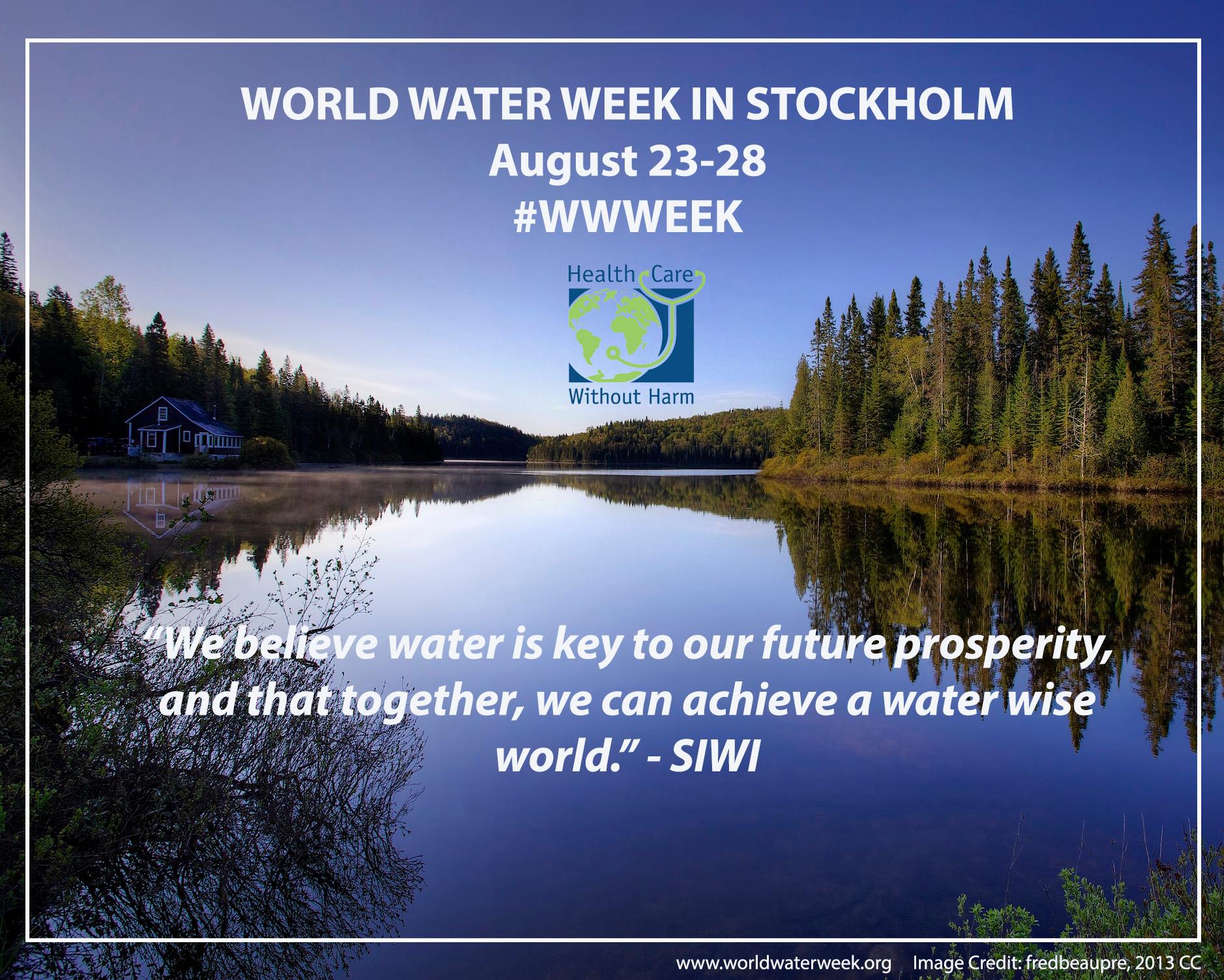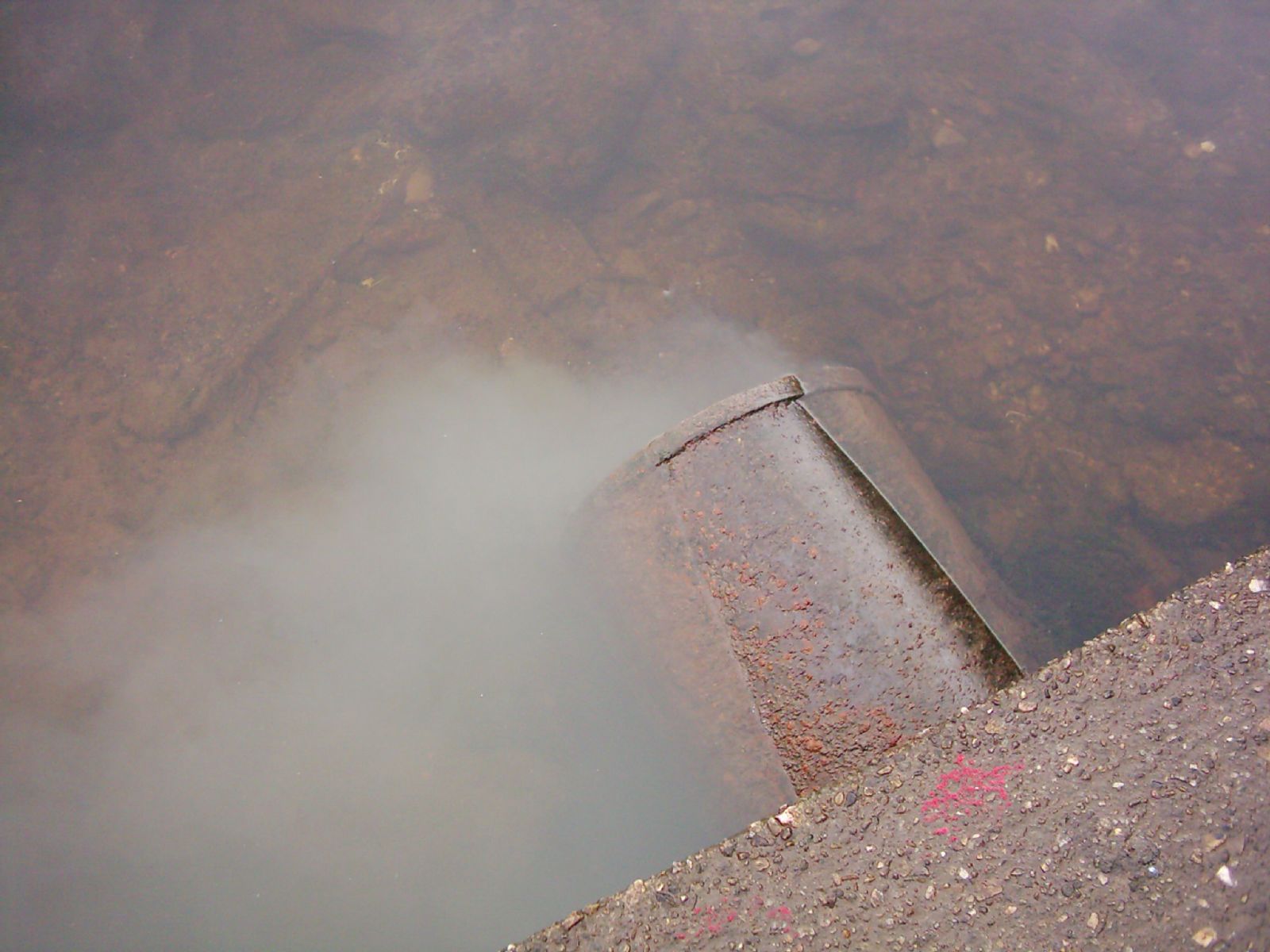World Water Week & The Healthcare Sector
August 23-28 2015 is World Water Week. It is the annual focal point for the globe’s water issues and is marked with a programme of events in Stockholm, Sweden. The theme of the event this year is Water for Development.
Water is a precious resource, often taken for granted, that is becoming more scarce due to climate change and a global rise in temperatures - leading to a rise in sea levels, hotter summers across Europe, widespread droughts around the world and new disease patterns moving up the lines of latitude. The healthcare sector (representing up to 10% of GDP in some EU countries), is hugely water and energy-intensive and there are a number of steps that those working in the sector can take to promote water conservation.
Health Care Without Harm (HCWH) Europe’s work on water mainly focuses on two areas: promoting water reduction and the sensible use of water in hospitals and healthcare centres and campaigning for the reduction of pharmaceutical residues in the environment, particularly in waterways, in order to achieve good quality of drinking water across Europe, without residues such as industrial chemicals, biocides, pesticides, pharmaceuticals and heavy metals.

Water Usage in Hospitals:
HCWH Europe has been promoting the reduction of hospital water consumption by helping hospitals and healthcare centres to implement a series of conservation, recycling and water treatment measures for many years.
To this end, HCWH Europe has been working with individual hospitals across Europe to promote these goals and share examples of best practice in water conservation. One excellent example of this in practice is the Hubertus Protestant Hospital in Berlin, who have installed a subsurface rainwater tank that serves as a reservoir for the irrigation of a park and, in emergency cases, it can be used by the fire brigade for immediate fire fighting. This, coupled with their energy-saving initiatives, has allowed the hospital to reduce their water and energy costs by about one hundred thousand euro and invest saved money in the provision of treatment and patient care.[1]
Another great example of best practice in water conservation is that of Barts and the London NHS Trust, who have reduced their water consumption by more than 30%, saving 100 million litres of water in three years.[2]
HCWH Europe also works with other regional teams and the HCWH Global office on the Global Green & Healthy Hospitals (GGHH) network project. This is a worldwide network of professional and academic organisations who endorse the GGHH Agenda with the aim to make hospitals and healthcare centres more environmentally friendly.
One of the ten goals outlined by GGHH concerns water and water conservation, with action items such as aspiring to a ‘net zero water use’ policy in a hospital system, implementing water conservation strategies in hospitals and switching from film-based radiological imaging equipment (which use large quantities of water) to digital imaging (which uses no water), amongst others.[3]
The GGHH website also contains a number of tools and resources that can be accessed by healthcare professionals and organisations as well as case studies from around the world with examples of best practice in water conservation.
Pharmaceuticals in the Environment:
Hundreds of different active pharmaceutical compounds are being discovered in waterways all over the world and concern is increasing about the harm that these might be causing to human health and the environment. By design, the active ingredients in pharmaceuticals remain unchanged and are not fully absorbed as they pass through the bodies of humans and animals and so active ingredients and/or their metabolites enter the environment. Pharmaceuticals also enter water systems not only after their consumption, but also in their production stage and through improper disposal.

Photo: Murray Barnes via Flickr CC
As well as the risk of antimicrobial resistance posed by pharmaceuticals in the environment, there are huge environmental issues associated with traces of pharmaceuticals found in water systems. Wildlife is particularly sensitive to these elements and there are many worrying examples, such as: anti-inflammatories and pain-killers found in fur taken from otters in England, perch in Sweden contaminated with antidepressants, sedatives and antibiotics and Baltic sea salmon contaminated with ethinyl estradiol (a contraceptive drug).[4]
In 2013, HCWH Europe launched the Pharmaceuticals in the Environment Resource Centre. Campaigning and collecting and sharing resources relating to pharmaceuticals in the environment has been a key part of HCWH Europe’s work in recent years and the website serves as a hub for these resources. The site also gives information about a number of ‘upstream’ and ‘downstream’ solutions to the problems associated with pharmaceutical residues in the environment.
Opportunities for Healthcare Professionals:
- If you are a healthcare professional or an estates or buildings manager for a hospital or healthcare centre, you can find examples of steps other organisations have already taken to reduce water consumption and waste on the case study section of the GGHH website here.
- If you would like to read more about pharmaceuticals in the environment, please visit our resource centre.
- Read our factsheet for health professionals: How Doctors Can Help Reduce Pharmaceutical Pollution.
- You can sign a Sum of Us petition asking Pfizer and other big pharmaceutical corporations to commit to stop purchasing from pharmaceutical factories without strong environmental controls and embrace full transparency in their supply chains here.
- Aidan Long, Communication & Information Officer, HCWH Europe
(Preview Photo Credit: Pulpolux via Flickr CC)

